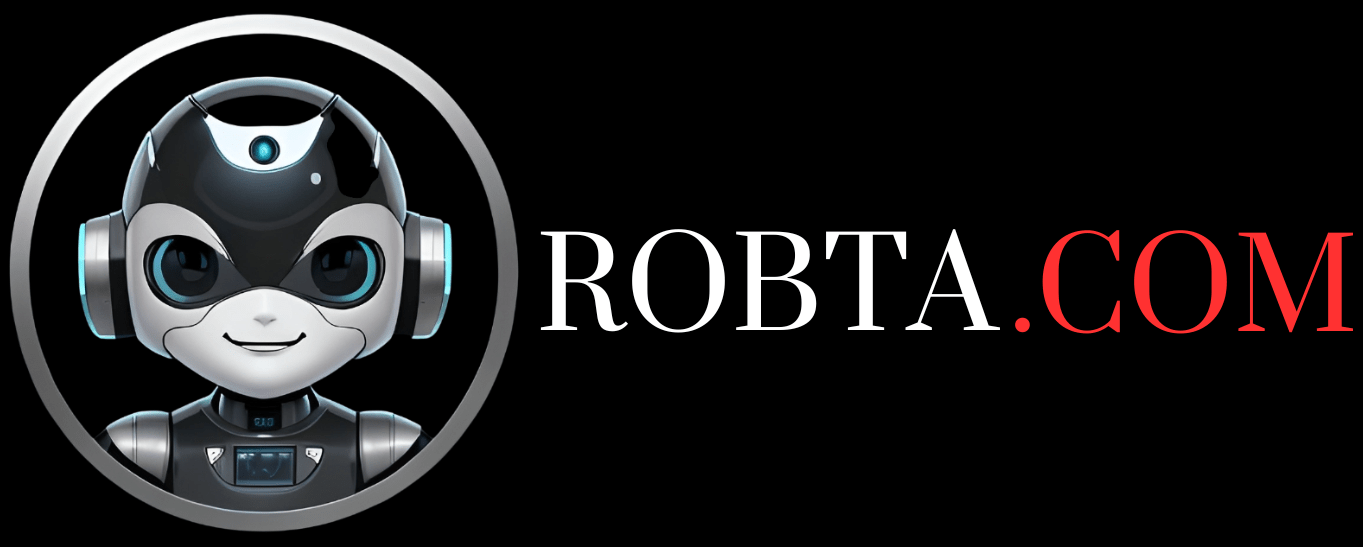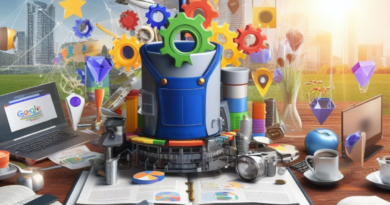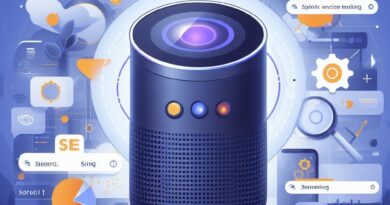Unlocking ChatGPT’s Potential in Tech: 5 Ways to Enhance Support & Automation
1. Introduction
Artificial Intelligence (AI) has been rapidly transforming various industries, and the technology sector is no exception. With the advancements in Natural Language Processing (NLP), chatbots have become increasingly sophisticated and capable of holding human-like conversations. One such powerful chatbot is ChatGPT. In this blog post, we will explore how the technology industry can leverage ChatGPT to enhance customer support, automate repetitive tasks, and improve overall user experience.
2. Understanding ChatGPT
Before diving into the use cases of ChatGPT, let’s take a moment to understand what ChatGPT actually is. Developed by OpenAI, ChatGPT is a state-of-the-art language model that uses deep learning techniques to generate human-like responses in conversational contexts. It is trained on a large corpus of text data, enabling it to understand and generate natural language with impressive fluency.
ChatGPT has gained popularity due to its ability to hold open-ended conversations and generate contextually relevant responses. It excels in engaging users and providing useful information. However, it’s important to note that ChatGPT has its limitations. It may sometimes produce incorrect or nonsensical answers, and it can be sensitive to input phrasing. Keeping these limitations in mind, let’s now explore how ChatGPT can be effectively utilized in the technology industry.
3. Enhancing Customer Support
Customer support is a critical aspect of any technology company’s operations. Efficient and effective customer support leads to higher customer satisfaction and loyalty. By integrating ChatGPT into customer support systems, companies can greatly enhance their support capabilities. Here’s how:
3.1. 24/7 Availability: ChatGPT can provide round-the-clock customer support, ensuring that customers can get assistance whenever they need it. This is particularly useful for global companies with customers in different time zones.
3.2. Instant Responses: ChatGPT can analyze and understand customer queries in real-time, providing instant responses. This reduces waiting times and improves the overall customer experience.
3.3. Smart Troubleshooting: ChatGPT can be trained on troubleshooting guides and knowledge bases, enabling it to suggest solutions to common problems. This empowers customers to quickly resolve issues without the need for human intervention.
3.4. Personalized Recommendations: By analyzing customer preferences and previous interactions, ChatGPT can provide personalized product recommendations and suggestions. This enhances cross-selling and upselling opportunities.
3.5. Efficient Ticket Management: ChatGPT can assist in triaging and categorizing support tickets, ensuring that urgent issues are prioritized and assigned to the appropriate teams. This streamlines the support workflow and reduces response times.
4. Automating Repetitive Tasks
The technology industry often involves repetitive tasks that can be time-consuming and monotonous for employees. ChatGPT can be utilized to automate these tasks, freeing up valuable human resources for more complex and creative work. Let’s explore some scenarios:
4.1. Automated Data Entry: ChatGPT can extract relevant information from emails, forms, or other sources and automatically update databases or spreadsheets. This reduces manual data entry efforts and minimizes the risk of errors.
4.2. Streamlining Internal Communication: ChatGPT can act as a virtual assistant, scheduling meetings, sending reminders, and even drafting emails based on predefined templates. This improves efficiency and allows employees to focus on higher-value tasks.
4.3. Content Generation: ChatGPT can generate blog posts, social media captions, or marketing copy based on given prompts. While it may require some editing and fine-tuning, it can significantly speed up content creation processes.
4.4. Automated Testing: ChatGPT can simulate user interactions and perform automated testing of software applications. It can identify bugs, provide feedback, and assist in quality assurance processes.
4.5. Virtual IT Helpdesk: ChatGPT can resolve common IT issues by providing step-by-step instructions or suggesting relevant knowledge base articles. This reduces the burden on IT support personnel and allows them to focus on more complex issues.
5. Improving User Experience
Providing a seamless and intuitive user experience is a top priority for technology companies. ChatGPT can play a crucial role in improving user experience across various platforms and applications. Consider the following scenarios:
5.1. Intelligent Virtual Assistants: ChatGPT can be integrated into virtual assistants or chatbots to provide intelligent and context-aware responses. Users can have natural conversations with the virtual assistant, obtaining quick and accurate information.
5.2. Natural Language Interfaces: ChatGPT can power natural language interfaces for software applications, making them more user-friendly. Users can interact with applications using their own words and phrases, eliminating the need to learn complex commands or menus.
5.3. Onboarding and Tutorials: ChatGPT can guide users through onboarding processes and provide interactive tutorials. This reduces the learning curve and helps users become familiar with the product or service quickly.
5.4. Voice-Activated Devices: ChatGPT can enable voice-activated devices to understand and respond to user commands in a more conversational manner. This enhances user interactions and makes the devices feel more natural and intuitive.
5.5. Smart Recommendations: By analyzing user preferences and behavior, ChatGPT can provide personalized recommendations and suggestions. This enhances user engagement and helps users discover relevant content or features.
6. Historical Context and Current Trends
The development of chatbots and conversational AI has a rich historical context, with significant advancements in recent years. Starting from rule-based chatbots, which relied on predefined rules and scripts, the technology has evolved to incorporate machine learning and NLP techniques. This has led to the emergence of AI-powered chatbots like ChatGPT.
In recent years, chatbots have become more intelligent and capable due to the availability of large datasets and advancements in deep learning algorithms. OpenAI’s GPT-3 model, on which ChatGPT is based, has garnered significant attention for its impressive language generation capabilities. This has sparked a wave of innovation and experimentation in various industries, including technology.
Today, there is a growing trend of companies adopting chatbots and conversational AI in their products and services. The technology industry, in particular, is at the forefront of this trend, leveraging AI-powered chatbots to enhance customer support, automate tasks, and improve user experience. With the continuous advancements in AI research, we can expect even more sophisticated and capable chatbots to emerge in the future.
7. Potential Future Implications
As chatbot technology continues to evolve, there are several potential future implications to consider:
7.1. Higher Customer Expectations: As users become accustomed to interacting with intelligent chatbots like ChatGPT, their expectations for customer support and user experience will rise. Companies will need to continuously innovate to meet these expectations and provide exceptional service.
7.2. Job Displacement and Transformation: The automation of repetitive tasks through chatbots may lead to job displacement in certain areas. However, it is also likely to create new job opportunities that focus on managing and improving chatbot systems.
7.3. Ethical Considerations: Chatbots like ChatGPT raise ethical concerns regarding data privacy, bias, and transparency. Continued research and regulation will be necessary to ensure the responsible and ethical use of AI in the technology industry.
7.4. Advancements in Personalization: As chatbots become more sophisticated in understanding user preferences and behavior, the level of personalization in customer interactions will increase. This will further enhance user experience and drive customer loyalty.
7.5. Integration with IoT and Smart Devices: Chatbots may increasingly interact with IoT devices and smart home systems, allowing users to control various aspects of their environment through natural language commands. This integration has the potential to revolutionize the way we interact with technology.
References
- Research Paper: “ChatGPT: A Large-Scale Transformer-Based Language Model for Chatbot Applications” by OpenAI researchers (Read Here)
- Research Paper: “Language Models are Few-Shot Learners” by OpenAI researchers (Read Here)
- Academic Institution: OpenAI – an artificial intelligence research laboratory that developed ChatGPT (OpenAI)
- Research Paper: “Improving Language Understanding by Generative Pre-training” by Alec Radford et al. (Read Here)
- Researchers: Alec Radford, Ilya Sutskever, and Wojciech Zaremba – key contributors to the development of ChatGPT
- Research Paper: “BERT: Pre-training of Deep Bidirectional Transformers for Language Understanding” by Jacob Devlin et al. (Read Here)
- Academic Institution: Stanford University – where the BERT model, which inspired ChatGPT, was developed
- Research Paper: “Attention Is All You Need” by Vaswani et al. – the original paper introducing the Transformer model architecture (Read Here)
- Academic Institution: University of Washington – where the researchers who developed the original Transformer model are affiliated
- Validated Academic Study: “How Language Models Learn: Transfer and Generalization” by Douwe Kiela et al. (Read Here)




